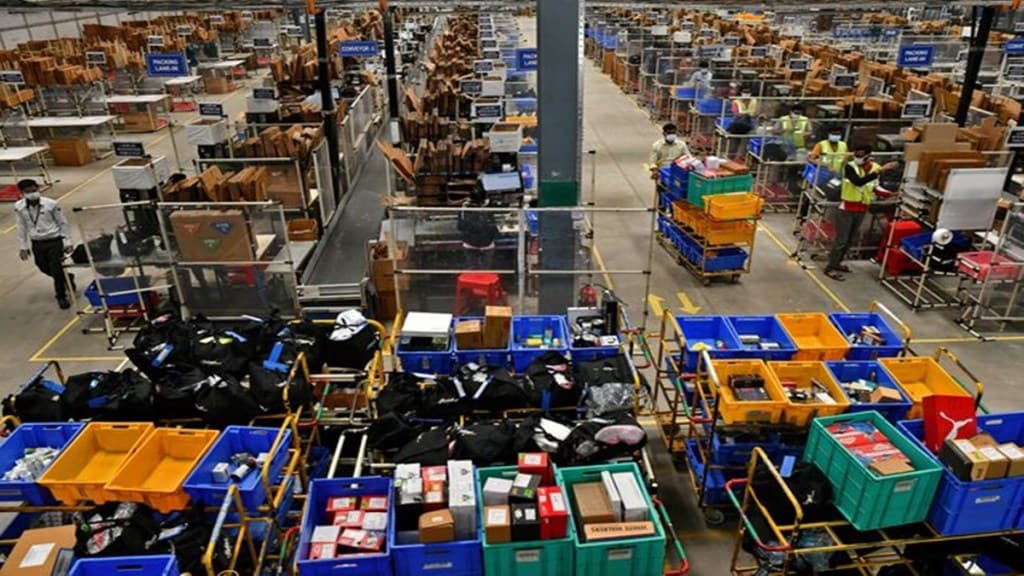– By Darshan Ghodawat
India’s economic growth trajectory is inextricably linked to its logistics sector, a crucial engine that powers the nation’s trade, commerce, and industry. A robust logistics policy is essential for fostering economic prosperity and global competitiveness. The National Logistics Policy (NLP) aims to address excessive costs and inefficiency concerns in India’s multi-modal and cross-sectoral logistics sectors. By tackling aspects such as boosting economic growth, generating employment opportunities, and lowering logistics costs, the policy has made Indian products more competitive in the global market.
Achieving this vision involves substantial investment in world-class digital infrastructure, alongside robust planning and implementation among various stakeholders. The logistics vision received a significant boost in 2021 with the introduction of the PM GatiShakti National Master Plan (PMGS – NMP), which provides seamless multi-modal connectivity infrastructure to various economic zones. This initiative underscores the logistics sector’s role in facilitating India’s economic development through efficient transportation of goods across the country and beyond its borders.
The government has shown a continued focus on transforming the logistics industry through infrastructure and technology-led reforms, leading to the creation of an integrated logistics ecosystem and efficient multimodal logistics infrastructure. As a result, India has climbed from the 44th to the 38th position out of 139 nations in 2023. To unlock the sector’s potential, sustained policy support and increased capital expenditure in transport and digital infrastructure development are crucial.
Logistics is at the heart of the E-commerce industry, and every stage in the E-commerce supply chain involves movement of goods in some form. With digitisation and live track-and-trace technology, companies now expect faster time-to-market and greater efficiency and visibility while simplifying complex operations in remote locations. E-commerce and logistics companies are increasingly leveraging AI and data analytics, including geofencing and mapping customers based on pin codes, to build a supply chain and logistics network that reaches remote areas.
A well-executed e-commerce logistics strategy contributes to smoother operations and enhanced customer experience. By ensuring that products are readily available, orders are processed efficiently, and deliveries are made on time, businesses can foster customer satisfaction and loyalty. Logistics support the growing E-commerce sector by offering cost-effective solutions nationwide. Tech-enabled supply chains have fostered new businesses like D2C brands and omnichannel retail, extending the reach of legacy businesses and small sellers.
A seamless logistics process can ultimately lead to increased sales and sustained growth in the competitive online marketplace. E-commerce relies heavily on logistics, which involves managing goods and services from the point of origin to the point of consumption. E-commerce orders often involve small packages placed by various customers, many of whom may not be loyal to a particular brand. Additionally, product demand can fluctuate unpredictably, making it challenging to anticipate shipping needs. To address these challenges, E-commerce businesses need to streamline their logistics operations.
Logistics play a crucial role in the progress of any country and have a direct impact on the Gross Value Added in the economy. The policy’s role in streamlining the fragmented logistics sector, reducing costs, and enhancing efficiency is pivotal as India aims to become a USD 7 trillion economy by 2030. In today’s hyper-charged digital age, logistics has become delivery backbone of the digital economy. The rapid growth of India’s E-commerce sector, projected to reach USD 120 billion by 2026, hinges on an efficient logistics network. A significant challenge India faces is the high logistics cost, currently around 14 percent of GDP, compared to the global average of 8 percent. The NLP is well-defined to address these challenges by reducing logistics costs, improving business profit margins, and boosting overall economic growth.
The vision of the National Logistics Policy is to create a seamless, efficient, and eco-friendly logistics network. It aims to reduce logistics costs from the current 13-14 percent of GDP to align with the global average of 8 percent by 2030. Achieving this reduction is crucial for enhancing the competitiveness of Indian products in both domestic and international markets. Finally, driven by a strong governmental framework and consistent infrastructure and technological investment, India’s logistics industry is set for hitherto unheard-of expansion and innovation. Strong logistics strategy will be the keystone in realising this objective as the country moves towards a USD 5 trillion economy. The logistics industry will be very important in determining India’s future by running its economic engine and improving its worldwide profile.
(Darshan Ghodawat is the CEO and Managing Director of AVA Global Logistics LLP.)
(Disclaimer: Views expressed are personal and do not reflect the official position or policy of Financial Express Online. Reproducing this content without permission is prohibited.)

